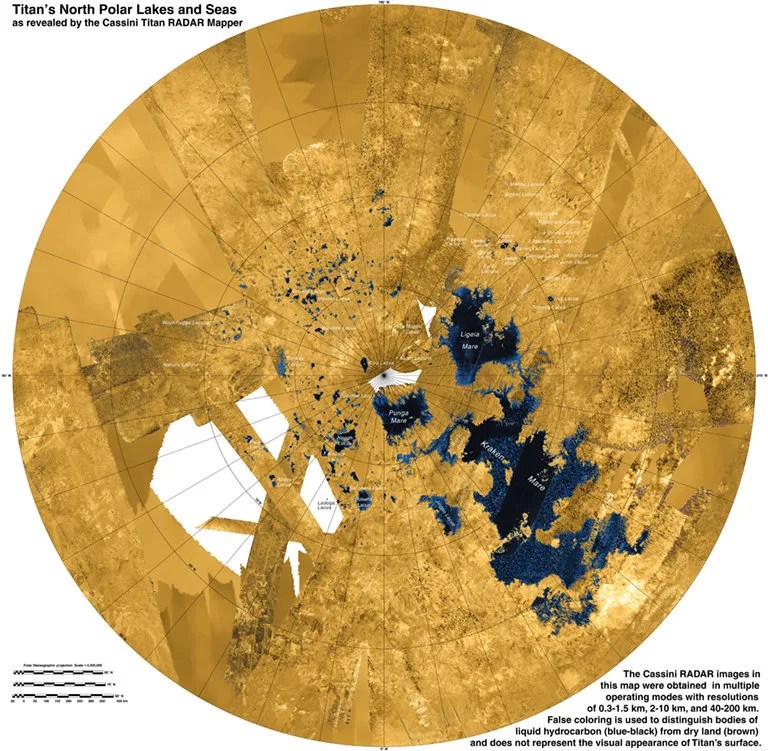2 min read

Cassini's approach for the T-104 Titan encounter began on Aug. 9, when the spacecraft successfully executed the largest propulsive maneuver of its remaining mission.
During the Aug. 21 encounter, the spacecraft performed some of the most unique and scientifically valuable radar observations of the entire Cassini Solstice mission.
The Cassini Radar’s Synthetic Aperture Radar Imager (SAR) captured a new region of the hydrocarbon sea known as Kraken Mare, as well as the mysterious “Magic Island” region of Ligeia Mare The radar team observed a feature in this location June 2013, but it appeared to have vanished in follow-up observations. What is the “Magic Island?” There are a number of hypotheses, all related to the warming trends in the north of Titan: Is it floating methane/ethane ice? Organic material? Volcanic vent bubbles? Waves whipped up by growing winds? No one really knows for sure. This new data may help scientists get closer to answering that question.
Radar also performed altimetry over Kraken Mare and its estuary, allowing for the measurements of their depths. Following this, observations with the Visible and Infrared Mapping Spectrometer (VIMS) looked for specular reflection on Kraken Mare to determine whether or not Titan’s winds create waves.
Finally, the Ion and Neutral Mass Spectrometer (INMS) instrument observed Titan's ionosphere. These observations come just four months after those captured on a previous flyby (T-100), allowing for a direct comparison of the noon and midnight regions of Titan.
Date
Aug. 21, 2014
Altitude
599 miles (964 km)
Speed
13,000 mph (5.6 km/sec)







